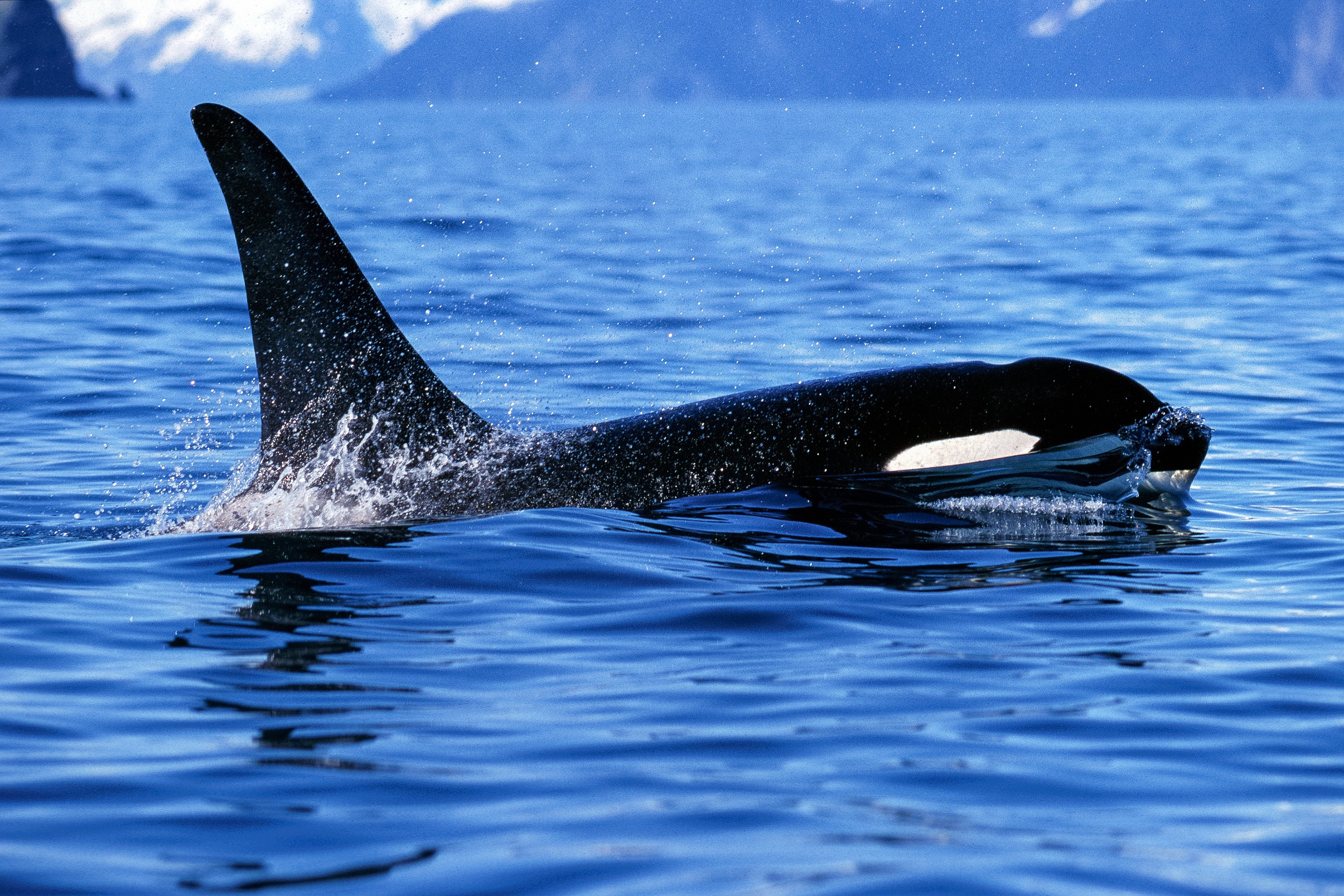The Endangered Status of Orca/Killer Whales: Understanding the Threats and Conservation Efforts

Another name for the orca is the killer whale, a misnomer. Orcas are not technically whales but dolphins. While they are carnivores who kill their prey, they usually don’t hurt people. The few recorded incidents in which orcas have harmed people took place when the whales were in captivity under stressful conditions. Conservation efforts are underway to help preserve this endangered species.
Orca/Killer Whale Characteristics
The back of an orca is almost entirely black, while its stomach is almost all white. Orcas have distinctive white spots over their eyes. There are different color gradations along the orca’s body.
Orcas have tall dorsal fins on their backs and large tail flukes. These characteristics are larger in male orcas compared to females. Being predatory animals, orcas have teeth that they use to catch and hold prey.
Orcas are highly intelligent, a characteristic that has led to their captivity in water parks. People have trained orcas to perform tricks for park visitors, a controversial practice.
Why Are Orcas Endangered?
The orca conservation status is vague and misleading. The organization responsible for studying animal populations and determining conservation status is the International Union for Conservation of Nature. The IUCN assigns species designations such as “endangered,” “threatened,” or “least concern.” Because orcas are challenging to study in the wild, the IUCN classifies them as “Data Deficient.”
Estimates of the wild orca population worldwide are about 50,000 individual animals. These estimates draw from surveys taken in 2006 and may only partially be accurate. This is the estimate for the entire orca species.
However, there are multiple subgroups of orcas in the world called “ecotypes.” Each ecotype is distinct, characterized by variations in appearance and size and different behaviors, dialects, and preferences in the prey they hunt. Even when different orca ecotypes share the same habitat, they rarely interact with one another, let alone interbreed.
Some ecotypes are more endangered than others. The southern resident population off the coast of central California consists of an estimated 76 individuals, while the AT1 transient population of the eastern North Pacific may number as little as seven.

Threats to Orca / Killer Whales
One of the biggest threats to orcas is overfishing by humans. While orcas feed on many different types of prey, tuna and salmon are essential to their diet. Unfortunately, these fish are also of commercial value to humans, and unsustainable fishing practices have driven down their numbers.
Another threat is the pollution of the orca habitat by chemical contamination. Runoff from sewers, wastewater plants, and farms that use pesticides can enter the ocean. These chemicals can indirectly harm orcas by contaminating their food supply, but the pollution can also directly affect orcas’ reproduction and immune systems.
Hunting and capture also represent a threat to orcas. Some fishermen illegally hunt and kill orcas to reduce the competition. A 2020 study explored the harmful effects of captivity on orcas and found that it led to dysfunctional behavior and indolence. It is no longer legal in the United States to capture orcas and display them in marine parks, but it still occurs in other countries.
Conservation Efforts
Efforts at protecting orcas concentrate on preserving their habitats and prey by dedicating critical habitats and enacting laws that punish those who harm or harass whales. More information will also help determine how best to help orcas, so the IUCN has instituted projects such as satellite tagging to gather sufficient data.
How We Can Help
Ordinary people can help by supporting sustainable fishing methods and reducing waste. The reduction of plastic consumption is a top priority. Next Level Sailing maintains a safe distance, allowing guests to observe the orcas in their environment rather than in captivity. In addition to being safer and healthier for the animals, a whale-watching trip provides an unforgettable experience for human observers.
